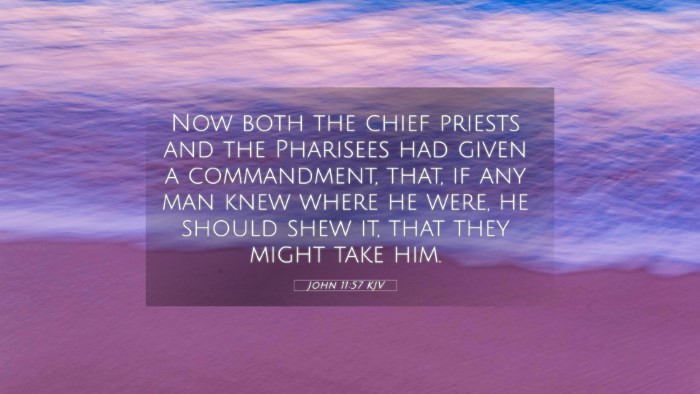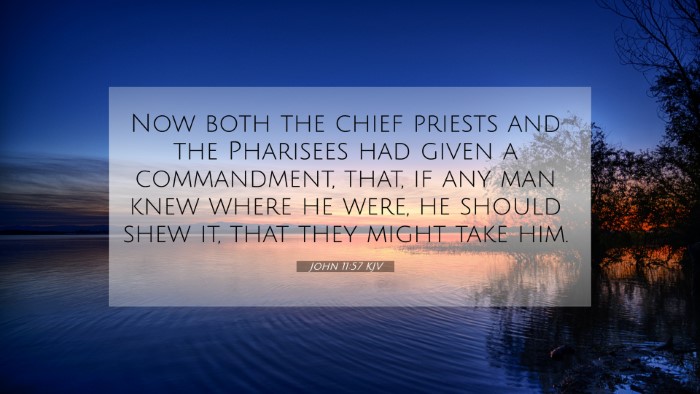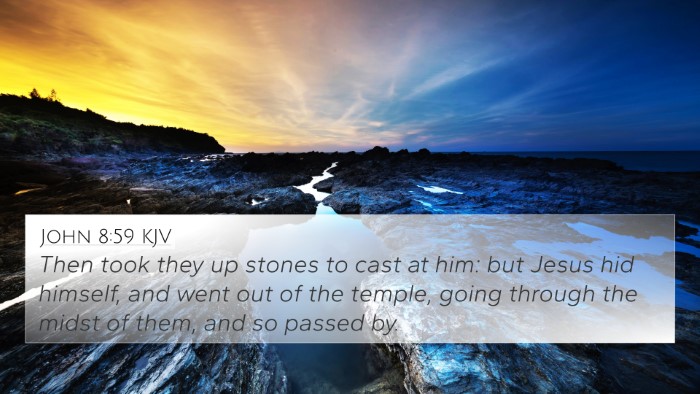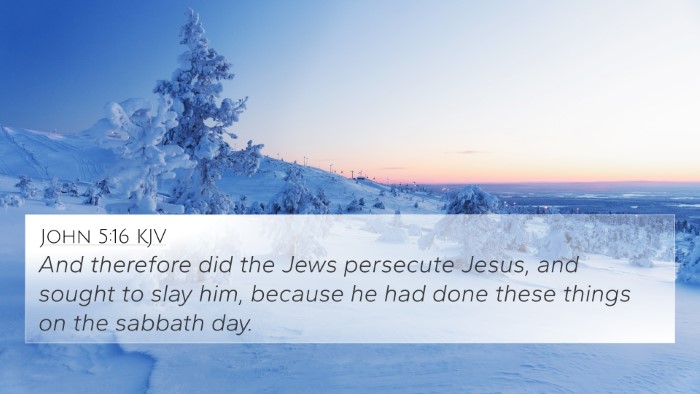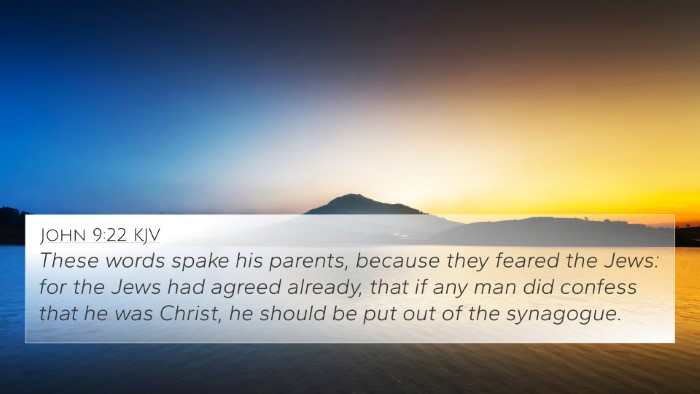Exploring John 11:57 - The Significance and Implications
Bible Verse: John 11:57 - "Now both the chief priests and the Pharisees had given a commandment, that, if any man knew where he were, he should show it, that they might take him."
Understanding the Context
This verse occurs in the context of the plot against Jesus, as the religious leaders conspire to capture Him following the raising of Lazarus. This plot highlights the tensions between Jesus and the Jewish authorities. The significance of John 11:57 lies in its demonstration of the depths of the opposition Jesus faced and sets the stage for the events leading to His crucifixion.
Commentary Insights
Matthew Henry: Henry notes that the command from the chief priests and Pharisees reveals their desperation and determination to stop Jesus, whom they viewed as a threat to their authority. He emphasizes the irony of their efforts, as they cannot thwart God's plans despite their scheming.
Albert Barnes: Barnes highlights the collaboration between the religious leaders, indicating that their unity in opposition reflects a more profound spiritual blindness. He connects this verse with the nature of sinful opposition against God's purposes and warns of the dangers of rejecting divine truths.
Adam Clarke: Clarke elaborates that the verse illustrates the extent of the fear the Jewish leaders had towards Jesus’ influence over the people. He points out that their plot illustrates a heart hardened by envy and fear, showcasing a significant turning point in the Gospel narrative where plotting against Jesus was not merely a political act but also a profound moral failure.
Key Themes Explored
- Opposition to Jesus: This verse captures the conspiratorial atmosphere surrounding Jesus’ ministry.
- Religious Authority: It highlights the fears of established religious leaders in the face of Jesus’ popularity.
- Fulfillment of Prophecy: The attempt to capture Jesus corresponds with prophetic fulfillments regarding His death and betrayal.
Bible Verse Cross-References
John 11:57 connects thematically and contextually with several other verses that illustrate similar themes of opposition and prophetic fulfillment. Some key cross-references include:
- Matthew 26:3-4: Religious leaders plotting against Jesus.
- Mark 14:1-2: The timeline of the chief priests’ plans to arrest Jesus.
- Luke 22:2: The plotting of the elders and chief priests against Jesus.
- John 7:32: Similar command to apprehend Jesus showing their determination.
- Isaiah 53:3: Prophetic insights into the rejection of Jesus by His own people.
- Matthew 12:14: The Pharisees conspiring to destroy Jesus after a miraculous healing.
- John 5:18: Jesus being persecuted for claiming a unique relationship with God.
- Acts 4:27-28: Acknowledgment of the opposition against Jesus in the early church context.
- John 13:2: Satan influencing Judas to betray Jesus, linking the plots against Him.
- Psalm 2:1-2: The nations conspiring against the Lord and His annointed one, a foreshadowing of the events surrounding His crucifixion.
Connections Between Bible Verses
John 11:57 serves as a striking example of the interconnectedness of Scripture, where several Bible verses illuminate one another. The conspiracies mentioned in John echo earlier themes in the Old Testament regarding the rejection of God's prophets, such as:
- Jeremiah 26:8-9: Jeremiah, like Jesus, faced threats from the religious authorities for prophesying the truth.
- Matthew 23:37: Jesus laments over Jerusalem, expressing His desire to gather them as a hen gathers her chicks, highlighting the tragic trend of rejecting God’s messengers.
This inter-Biblical dialogue enriches our understanding of both the New Testament context and the framework of ongoing themes of opposition to God’s will throughout history.
Thematic Bible Verse Connections
By recognizing these thematic connections, believers can gain a deeper insight into the nature of Christ’s mission and the societal impacts of His presence. The fear of the Pharisees parallels modern fears concerning the truth, authority, and influence. Such reflections can serve as critical tools for Bible cross-referencing and deepen one’s study of Scripture.
Conclusion
John 11:57 is not merely a historical account but a call to assess the continuous challenge to divine authority both in biblical times and today. Cross-referencing this verse with the others enhances our understanding of the Gospels and illustrates the profound depth of the conflict embodied in Christ’s ministry. This analysis, supported by reputable commentaries, encourages further studies using tools for Bible cross-referencing that can yield rich spiritual insights.

